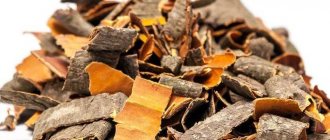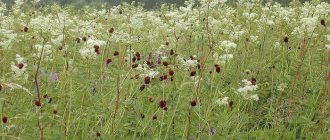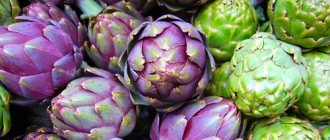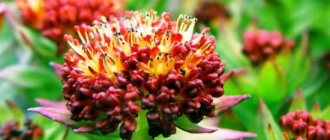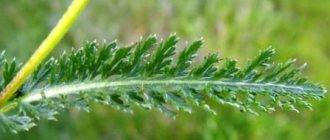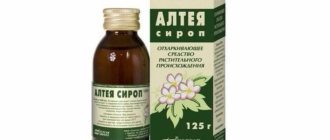Aspen bark is a valuable pharmacological raw material. It has pronounced antibacterial properties. Pharmacy substrate is widely used in modern medicine; its scope is varied.
- Aspen bark extract
Healing properties of aspen bark
There are many recipes for medicines with tree bark. Healing drinks, decoctions, lotions and balms are prepared from raw materials. Deciduous aspen extract is included in modern pharmacological preparations. Wood raw materials have the following medicinal properties:
- Normalization of metabolism;
- Relieving inflammation;
- Removal of salts and toxins;
- Weight loss;
- Wound healing effect;
- Strengthening immunity;
- Removal of parasites;
- Reduced blood sugar;
- Strengthening the heart and blood vessels.
Aspen bark includes volatile substances, glycosides, and acids. Together, they act systemically, triggering metabolic processes. As a result, blood circulation accelerates, cells are enriched with oxygen. What does aspen bark help with? It eliminates congestion in tissues and organs, normalizes the acid-base balance and hormonal levels of the body.
Indications
The main use of aspen is the treatment of opisthorchiasis, which is caused by the cat fluke.
Attention! In addition, the therapeutic effects of components such as tannin and glycosides can fight roundworms, schistosomiasis and giardia.
If aspen is combined with antiparasitic drugs or other medicinal plants that have a similar effect, then you can achieve success in removing the following parasites from the body:
- tapeworms;
- roundworms;
- liver fluke;
- simple microorganisms.
Bark for opisthorchiasis
Reviews
According to experts, the medicinal properties of the bark have not been sufficiently studied. Phytotherapist T.V. Plesovsky wrote in his publication “The Healing Properties of Aspen” that the tree is a universal oxidizing agent. It oxidizes and burns out any infection in the human body. Aspen heals inflammation, cleanses the bile ducts, kidneys and bladder. Aspen bark effectively frees the body from parasites.
Ketova Ya.D., a pharmacist, writes about how to properly brew aspen bark. Wood raw materials are crushed, poured into a thermos and boiling water is added. Add a tablespoon of dry mixture to a glass of boiling water. The drink is kept overnight, after which it is ready for consumption.
The treatment will be effective if you know how to drink aspen bark. So, during antiparasitic therapy, the infusion should be drunk on an empty stomach in the morning, every time before meals. Treatment of joint diseases is long-term. The drug must be taken for six months. Positive reviews of aspen bark online indicate that the medical effect is almost always positive.
Facts: Aspen bark is used to successfully treat colds. It is called “natural aspirin” because... it contains salicin.
What diseases does it help with?
Medicinal preparations based on wood extracts benefit the body. They are best treated comprehensively, in combination with other medications. Uncontrolled treatment can be harmful, so you should take the drug only after consulting a doctor. What diseases does aspen bark help with? This is a highly effective remedy that cures the following diseases:
- Pulmonary diseases: bronchial asthma, tuberculosis;
- Joint diseases: arthritis, arthrosis, rheumatism and radiculitis;
- Infections of the gastrointestinal tract: dysentery and diarrhea;
- Urogenital infections: nephritis, prostatitis;
- Skin ailments: psoriasis, eczema, dermatitis;
- Helminthic infestation: helminthiasis.
Successful treatment of severe diseases of the endocrine glands, including type 2 diabetes. Infusions and extracts help restore pancreatic function.
Aspen bark helps with diabetes even in advanced cases. After a certain time after taking the medicine, blood sugar stabilizes. There are restrictions on taking medications on a substrate. They cannot be used for constipation, pregnancy and lactation, dysbacteriosis and gastric pathologies. In case of allergies and intolerances, aspen bark causes harm to the body.
Are there any contraindications?
Despite the softness and organic chemical composition of aspen bark, like any product of natural origin, the human body can exhibit an individual reaction. This means itching and rashes on the skin, lacrimation, stool disorders, sleep disturbances, and the like. Such changes are not characteristic, but are caused only by increased sensitivity to one or more chemical components. If they are fixed, aspen bark should be excluded from the treatment regimen.
There are also contraindications for health reasons, although they are few. Thus, it is not recommended to use herbal remedies with such a base for chronic constipation, especially caused by dysbiosis.
In any case, when choosing a treatment option for yourself using a product based on or involving aspen bark, do not forget to consult a doctor. Let such treatment regimens only help you.
Aspen bark for men
Medicines, the basic component of which is aspen, are indispensable in the treatment of male urinary tract. It was known in ancient times how beneficial aspen bark is for men. Prostatitis was treated with ointments and infusions. Aspen bark completely cures prostatitis in the aggressive stage. Also prevents the appearance of cancer cells.
The infusion contains lignans and sterols, natural antioxidants that can stop the development of pathological processes in the prostate. Aspen bark is effective for prostate adenoma.
When cardiac activity fails, the male reproductive system suffers. Due to insufficient blood circulation, the male sexual organ is not filled with blood, hence the weak potency. A decoction of aspen bark normalizes the function of the heart muscle and improves blood circulation. The medicine dissolves cholesterol, improving blood circulation and restoring erectile function.
Facts: Infusion of aspen bark is an excellent remedy against vitamin deficiency. It contains iron, copper, zinc and vitamins that are vital for humans.
In what form and how to apply
The basis for medicinal infusions, decoctions and balms is the substrate collected from April to May. It is thoroughly washed and dried in an oven at a temperature not exceeding 50 degrees. Aspen bark retains its medicinal qualities for two years.
The preparation of the dosage form depends on the purpose of administration. Aspen bark can be purchased at retail pharmacies. In spring it is harvested for medicinal purposes. Take orally an extract or tincture of aspen bark diluted with water. For skin damage, balms and extracts help well.
The finished decoction is drunk in its pure form. The decoction is often used as a basis for baths and microenemas. Ointments and balms are used externally to treat burns and skin infections.
Reproduction
Aspen can be grown in the wild or in specialized nurseries. The tree can propagate by several methods: seeds and cuttings.
Seeds
Aspen reproduces very quickly. After flowering, the inflorescences turn into small boxes with seeds. After ripening, the seed box opens and the seeds fall into the ground or are carried by the wind. It should be noted that aspen seeds quickly lose their properties. If, after ripening, the seeds do not fall into the ground within 5-6 days, they die.
For the seed to germinate, it is enough to get into moist soil. However, fallen leaves or grass may appear in the path of the planting material. Therefore, of the large number of seeds that fall annually from a mature tree, only a few become young seedlings.
Therefore, in nurseries where aspen is grown, the soil near the plantings is plowed. This way the crop has a greater chance of producing young seedlings. Seedlings grown using seeds are weak and require greenhouse conditions. Therefore, the method of propagation by root shoots is used very often.
Root shoots
Most often, the plant reproduces by root shoots. A root from an adult tree can produce several fresh shoots at the same time. It should be noted that the young tree may be at a great distance from the mother crop.
In order to transplant such a seedling, it is necessary to perform the following algorithm of actions:
- Using a shovel, carefully clear the soil near the tree. This is done in order to identify the maternal root shoot. The maternal shoot will have the appearance of a thick root, from which a young tree with its own root system emerges.
- Carefully cut off the seedling at a distance of at least 30 cm from the mother. It is not recommended to dig up seedlings that grow too close to the tree. This may harm the mature plant.
- Dig up the seedling along with the soil and transplant it to a new location. It is recommended to treat the area of the mother root with garden varnish.
Aspen can produce several seedlings from one root shoot. They will all grow at a short distance from each other.
Aspen bark extract
The healing properties of aspen bark are most fully manifested in extracts. The extract cannot be prepared at home, because... Need wood extractor. It is removed using special equipment.
Thick extract is a concentrate of useful substances extracted from finished raw materials. Production technology allows for maximum preservation of healing properties.
The main benefits of extracts are:
- High concentration of nutrients:
- Ease of use:
- Long shelf life without loss of quality.
Aspen bark extract has almost no contraindications. The drug can be conveniently used as a basis for the production of medicinal tinctures and creams. When diluted, the extracts are drunk as a ready-made medicine. At the same time, aspen bark brings invaluable benefits. Pure concentrated aqueous extract of aspen bark is presented in the drug Populin with dihydroquercetin.
Facts: Aspen bark is widely used in the production of leather products. When tanning leather, raw materials give it a yellow or green tint.
Places of growth
Wherever you can find aspen! In Russia, it is widespread almost everywhere: in the forest-tundra zone, in forest-steppes, and on the edges, in pure aspen forests and as part of a mixed forest, on wet soils along the banks of reservoirs, in swamp areas, and in parks. Aspen is actively used for urban plantings: in autumn, variegated foliage gives streets and squares an unusually bright appearance. Beekeepers also love aspen trees, which is why you can find aspen trees near apiaries. In the spring, bees collect nectar from aspen flowers, and when the buds bloom, they collect viscous glue, which is used to produce propolis.
Infusion of aspen bark
Aspen infusion is effective for common inflammatory diseases. It can be prepared at home from pre-dried raw materials. What are the benefits of aspen bark in infusion form? During infusion, the raw materials impart all their beneficial properties to water. To get a high-quality drink, pour a glass of boiling water over a spoonful of wood substrate. The product is infused for 3-4 hours, then the drink is ready for use.
How to take aspen bark as an infusion? The finished drink is prescribed for complex therapy and as a basic remedy for infections.
Conclusion
Aspen treats various ailments. Its beneficial qualities are used in home medicine. It has many more advantages than disadvantages. The Argo company presents aspen in such popular products as Ecorsol, already mentioned, Populin and others. These drugs have proven themselves to be effective in treating a number of diseases and have won well-deserved praise from doctors and patients as safe means of treating and preventing serious illnesses.
Like any medicine, aspen bark has contraindications. Therefore, a medical consultation is necessary before taking it.
Chemical composition
In folk medicine, tree bark, buds, leaves and young shoots have been used as medicinal raw materials since ancient times.
Found in various parts of the plant:
- Bark: aromatic acids, carbohydrates (sucrose, fructose, glucose, etc.), phenologlycosides, higher fatty acids (behenic, arachidic, lauric, capronic, etc.), tannins, bitter glycosides (salicin, populin);
- Leaves: vitamin C, carotenoids, organic acids, carbohydrates, tannins, anthocyanins, phenologlycosides, flavonoids, carotene;
- Kidneys: aromatic acids, triglycerides of phenolcarboxylic acids, carbohydrates (fructose, raffinose, etc.), tannins;
- Wood: cellulose, resin, nectasan.
